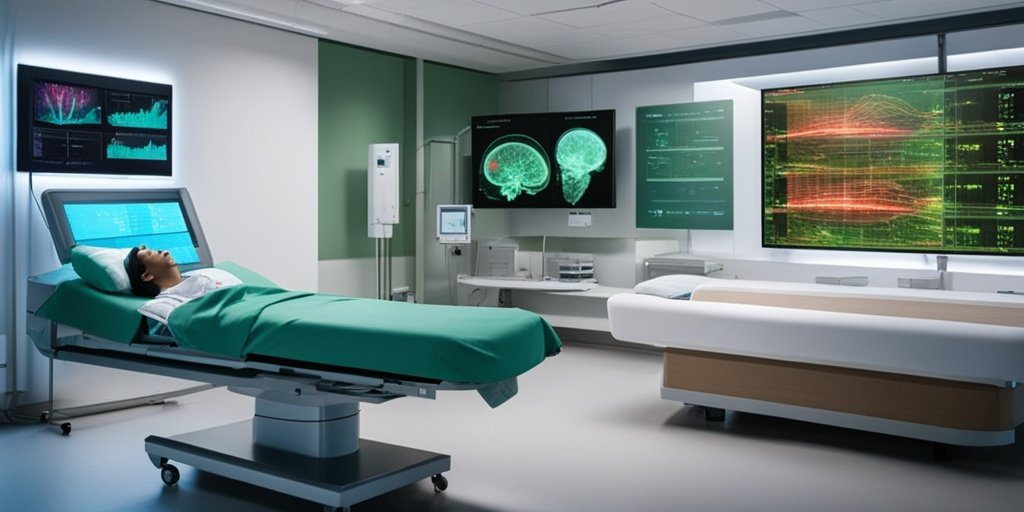⚡ Quick Summary
This study compares the efficacy of deep learning (DL) and machine learning (ML) models in predicting strokes, utilizing a dataset of 663 patient records. The findings reveal that the Random Forest (RF) model outperformed all others, highlighting the potential of these technologies for early stroke detection.
🔍 Key Details
- 📊 Dataset: 663 records from Hazrat Rasool Akram Hospital, including 401 healthy individuals and 262 stroke patients.
- ⚙️ Models used: Eight models including ML (SVM, XGB, KNN, RF) and DL (DNN, FNN, LSTM, CNN).
- 🔍 Techniques: 10-fold cross-validation and hyperparameter tuning to prevent overfitting.
- 📈 Evaluation metrics: Accuracy, specificity, sensitivity, F1-score, and ROC curve.
🔑 Key Takeaways
- 🏆 RF model achieved the highest performance metrics across the board.
- 💡 LSTM demonstrated superior sensitivity at 96.15%.
- 📊 FNN excelled in specificity, accuracy, and F1-score, all at 96.0%.
- 🤖 DL models generally outperformed ML models, except for RF.
- 📉 ML models showed a wider range of performance, with sensitivities from 29.0% to 94.0%.
- 🌍 Study conducted in Tehran, Iran, emphasizing the need for local healthcare solutions.
- 🔮 Potential for combining DL and ML technologies for enhanced stroke prediction.

📚 Background
Stroke remains a leading cause of disability and death worldwide, making timely prediction and intervention crucial. Traditional methods of stroke prediction can be limited in their accuracy and speed. The integration of artificial intelligence through DL and ML offers a promising avenue for improving early detection and treatment outcomes.
🗒️ Study
This study aimed to evaluate the effectiveness of various DL and ML models in predicting strokes using a comprehensive dataset from Hazrat Rasool Akram Hospital. The researchers employed advanced techniques such as Shapley Additive Explanations (SHAP) to enhance the interpretability of the models, ensuring that the predictions could be understood and trusted by healthcare professionals.
📈 Results
The results indicated that the RF model outperformed all other models with a sensitivity of 99.9%, accuracy of 99.0%, and specificity of 100%. In comparison, DL models like LSTM and FNN showed strong performance, but RF’s metrics were significantly higher, showcasing its potential for clinical application.
🌍 Impact and Implications
The implications of this study are profound, as it underscores the potential of AI technologies in enhancing stroke prediction capabilities. By leveraging the strengths of both DL and ML models, healthcare providers can significantly improve early detection, ultimately leading to better patient outcomes and reduced long-term disabilities associated with strokes.
🔮 Conclusion
This research highlights the remarkable potential of explainable artificial intelligence in stroke prediction. The superior performance of the RF model suggests that integrating various AI technologies could pave the way for more effective and timely interventions in stroke care. Continued exploration in this field is essential for advancing healthcare solutions.
💬 Your comments
What are your thoughts on the use of AI in stroke prediction? We would love to hear your insights! 💬 Share your comments below or connect with us on social media:
Explainable artificial intelligence for stroke prediction through comparison of deep learning and machine learning models.
Abstract
Failure to predict stroke promptly may lead to delayed treatment, causing severe consequences like permanent neurological damage or death. Early detection using deep learning (DL) and machine learning (ML) models can enhance patient outcomes and mitigate the long-term effects of strokes. The aim of this study is to compare these models, exploring their efficacy in predicting stroke. This study analyzed a dataset comprising 663 records from patients hospitalized at Hazrat Rasool Akram Hospital in Tehran, Iran, including 401 healthy individuals and 262 stroke patients. A total of eight established ML (SVM, XGB, KNN, RF) and DL (DNN, FNN, LSTM, CNN) models were utilized to predict stroke. Techniques such as 10-fold cross-validation and hyperparameter tuning were implemented to prevent overfitting. The study also focused on interpretability through Shapley Additive Explanations (SHAP). The evaluation of model’s performance was based on accuracy, specificity, sensitivity, F1-score, and ROC curve metrics. Among DL models, LSTM showed superior sensitivity at 96.15%, while FNN exhibited better specificity (96.0%), accuracy (96.0%), F1-score (95.0%), and ROC (98.0%) among DL models. For ML models, RF displayed higher sensitivity (99.9%), accuracy (99.0%), specificity (100%), F1-score (99.0%), and ROC (99.9%). Overall, RF outperformed all models, while DL models surpassed ML models in most metrics except for RF. DL models (CNN, LSTM, DNN, FNN) achieved sensitivities from 93.0 to 96.15%, specificities from 80.0 to 96.0%, accuracies from 92.0 to 96.0%, F1-scores from 87.34 to 95.0%, and ROC scores from 95.0 to 98.0%. In contrast, ML models (KNN, XGB, SVM) showed sensitivities between 29.0% and 94.0%, specificities between 89.47% and 96.0%, accuracies between 71.0% and 95.0%, F1-scores between 44.0% and 95.0%, and ROC scores between 64.0% and 95.0%. This study demonstrates the efficacy of DL and ML models in predicting stroke, with the RF models outperforming all others in key metrics. While DL models generally surpassed ML models, RF’s exceptional performance highlights the potential of combining these technologies for early stroke detection, significantly improving patient outcomes by preventing severe consequences like permanent neurological damage or death.
Author: [‘Moulaei K’, ‘Afshari L’, ‘Moulaei R’, ‘Sabet B’, ‘Mousavi SM’, ‘Afrash MR’]
Journal: Sci Rep
Citation: Moulaei K, et al. Explainable artificial intelligence for stroke prediction through comparison of deep learning and machine learning models. Explainable artificial intelligence for stroke prediction through comparison of deep learning and machine learning models. 2024; 14:31392. doi: 10.1038/s41598-024-82931-5